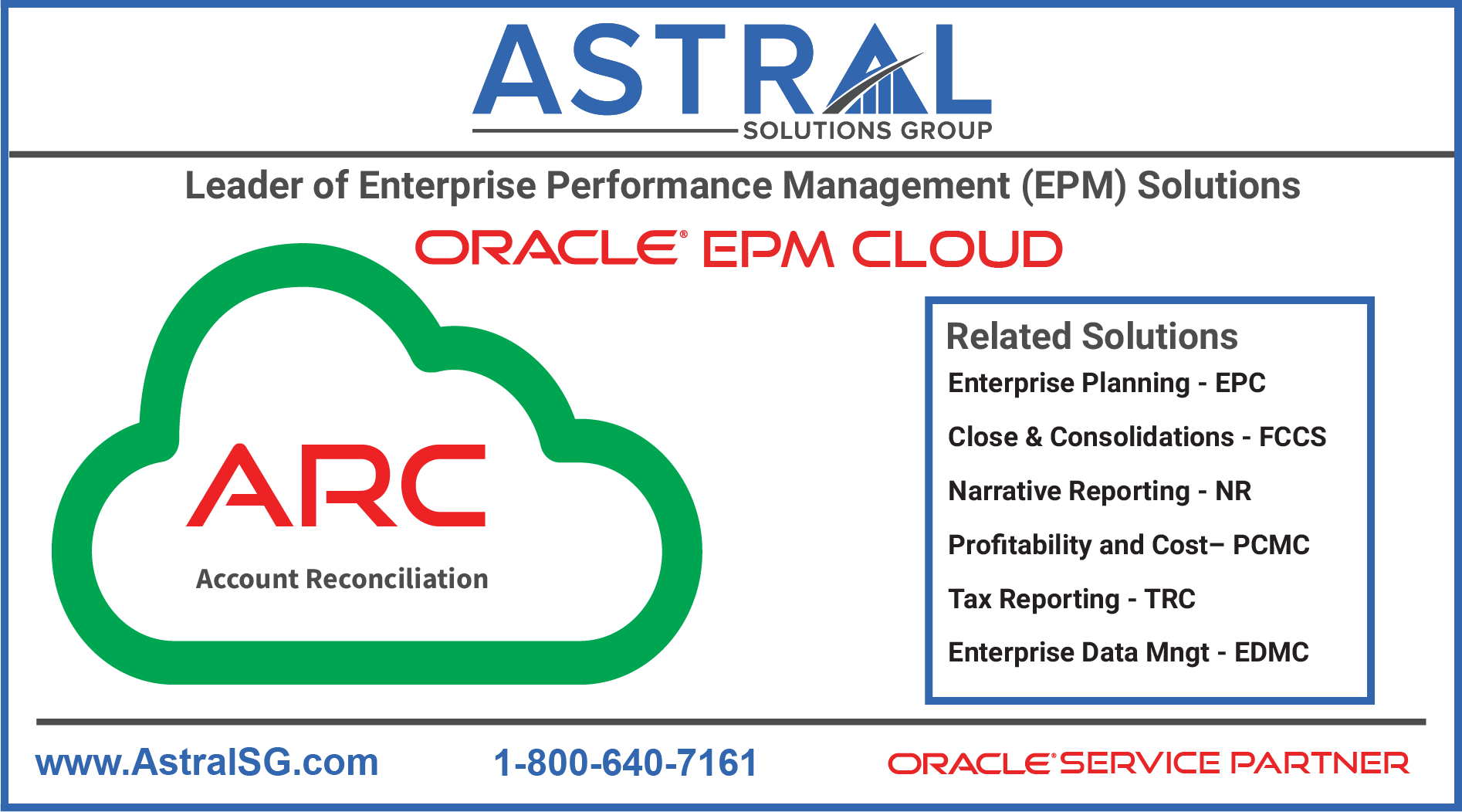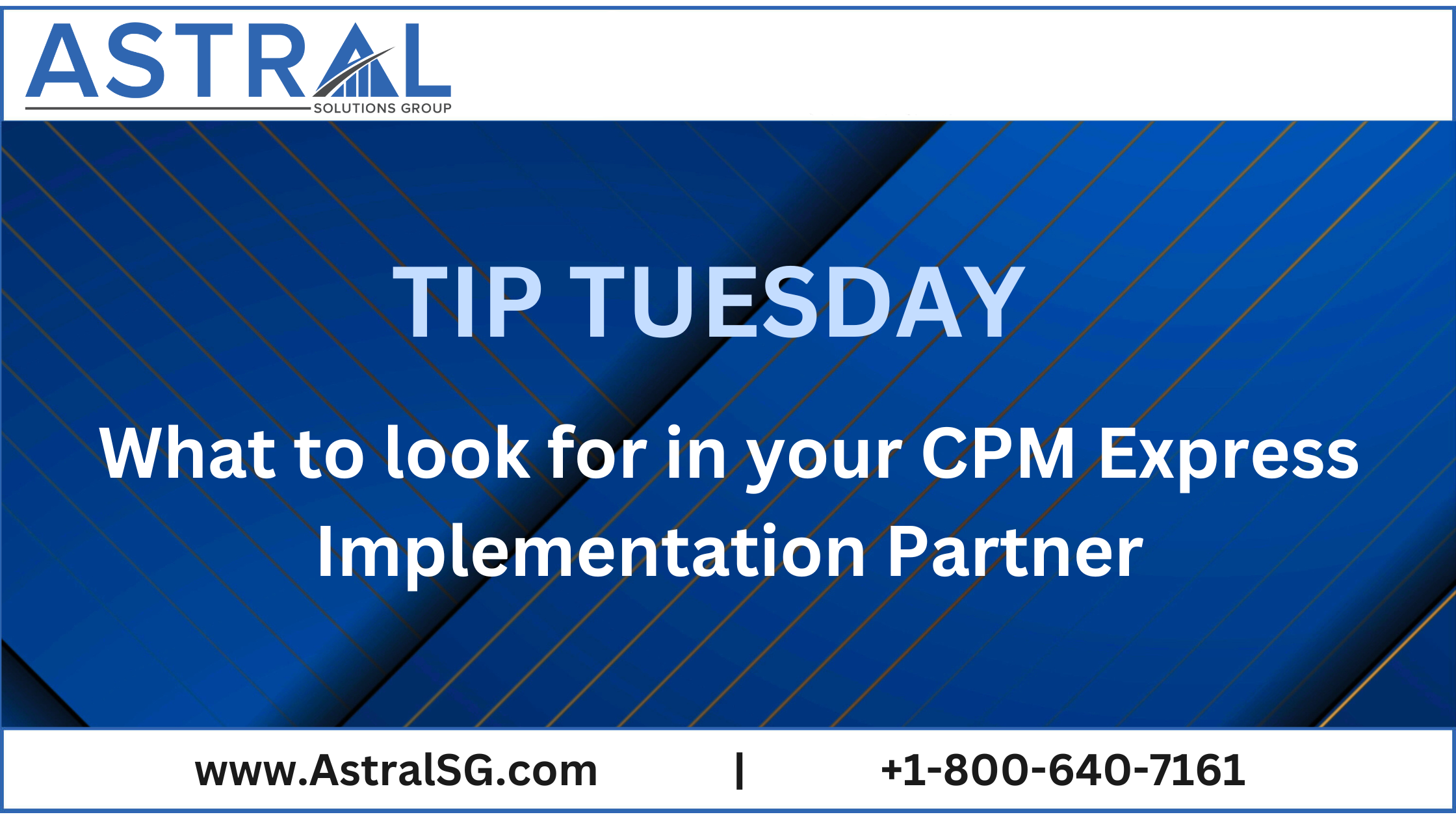
Oracle Cloud EPM Account Reconciliation (ARC) is a powerful solution that simplifies business reconciliation. It provides a comprehensive set of tools that enables businesses to automate their financial close processes, lower the chance of errors, and boost overall productivity. This article will define Oracle Cloud EPM Account Reconciliation (ARC) and its key features and benefits.
What is Oracle Cloud EPM ARC?
A cloud-based reconciliation tool, Oracle Cloud EPM ARC, aids businesses in automating their reconciliation process. It enables financial teams to oversee and manage the entire procedure, from data gathering to final reconciliation certification. The system provides several reconciliations, including transaction matching, general ledger, intercompany, and bank reconciliations.
Other Oracle EPM Cloud solutions, such as Financial Consolidation and Closing, Planning and Budgeting, and Profitability and Cost Management, are integrated with Oracle Cloud EPM ARC. Thanks to this integration, organizations may handle their financial closing processes in an easy-to-use, integrated way.
- Oracle EPM Solution:
A collection of software tools called Oracle EPM (Enterprise Performance Management) aids in the planning, administering, and analyzing of an organization’s financial and operational performance. It contains modules including Account Reconciliation, Tax Provisioning, Profitability and Cost Management, Financial Consolidation and Closing, Financial Planning and Analysis, and Account Reconciliation. Oracle EPM offers a unified platform that enables businesses to improve decision-making, streamline operations, and lower the risk of errors.-
Reconciliation Compliance:
Ensuring financial reconciliations are completed accurately and under regulatory requirements is known as reconciliation compliance. Verifying that account balances agree, locating and resolving discrepancies, and providing an audit record of all reconciliation adjustments are all part of this process. As a result, organizations may keep the trust of their stakeholders while avoiding fines and penalties by ensuring that regulatory obligations are followed. -
Auto-reconciliations:
The automated comparison of transactions between two sets of data is referred to as auto-reconciliation. By doing away with physical intervention, this procedure lowers the possibility of mistakes and saves time. Auto-reconciliations frequently handle bank, intercompany, and general ledger reconciliations. -
Flexible Formats:
The capacity to modify the design and organization of financial reports is referred to as flexible formats. Users can utilize this feature to customize messages based on their requirements, making it simpler to examine data and make wise judgements. Also, by delivering information that complies with specific standards, flexible formats help firms meet regulatory requirements. -
Reporting/Analytics:
“Reporting and analytics” describe creating financial reports and data analysis to learn more about business performance. Users can make custom reports using reporting and analytics tools, see data in charts and graphs, and do ad hoc analyses. Organizations can use these tools to spot trends, point out areas that need improvement, and arrive at wise conclusions. -
Variance Analysis:
The technique of contrasting actual financial results with projected or budgeted outcomes is known as variance analysis. Organizations can use this technique to find out where performance falls short of expectations and to determine why. Analysis is crucial to decision-making, and variance analysis is frequently used for financial planning.
-
Reconciliation Compliance:
-
Transaction Matching:
Comparing two data sets to find matching transactions is called transaction matching. This procedure is frequently employed for bank, intercompany, and general ledger reconciliations. By removing the requirement for manual intervention, transaction matching lowers the possibility of errors and saves time. -
Oracle Fusion Cloud EPM:
Financial Planning and Analysis, Account Reconciliation, Tax Provisioning, Profitability and Cost Management, and Financial Consolidation and Closing are just a few of the modules offered by Oracle Fusion Cloud EPM, a cloud-based enterprise performance management solution. A unified platform provided by Oracle Fusion Cloud EPM enables businesses to improve decision-making, streamline operations, and lower the risk of errors. In addition, real-time reporting, smartphone access, and advanced analytics capabilities are also provided. -
Compliance Management:
Oracle Account Reconciliation has functionalities for managing regulatory compliance, such as SOX and other financial regulations. Organizations can use these characteristics to demonstrate compliance while lowering the risk of non-compliance. -
Dashboard and Reporting:
Users can track the status of reconciliations and performance indicators using Oracle Account Reconciliation’s real-time dashboards and reporting features. This feature aids users in making quick decisions based on real-time data and identifying bottlenecks and problems. -
Collaboration:
Users can share and communicate information about reconciliations using the collaboration options offered by Oracle Account Reconciliation. By ensuring stakeholders are informed and participating, this feature helps to promote transparency and accountability in the reconciliation process.
Key Benefits of Oracle Cloud EPM ARC:
-
Automation of the Reconciliation Process
Oracle Cloud EPM ARC provides comprehensive tools to automate the reconciliation process. Hence, it does away with the necessity for manual intervention, lowers the possibility of errors, and saves time. Additionally, the system enables customers to customize the reconciliation process to their needs, simplifying process management. -
Improved Visibility and Control
Users may track the status of the reconciliation process thanks to Oracle Cloud EPM ARC’s real-time visibility into the process. The solution provides a dashboard that lists all reconciliations, including pending, ongoing, and finished. Because of this visibility, financial departments can quickly detect and address problems. -
Increased Accuracy and Efficiency
Advanced matching features in Oracle Cloud EPM ARC help automate reconciliation. By automatically matching transactions based on user-defined criteria, the system cuts down on the time and work needed to finish reconciliations. In addition, by automating the reconciliation process, finance teams are given more time to concentrate on other essential activities while ensuring the accuracy and completeness of the process. -
Reduced Risk of Errors
Reconciliation procedures are safe and auditable using Oracle Cloud EPM ARC. Strong controls built into the solution guarantee the precision and thoroughness of reconciliations. Moreover, it offers a thorough audit record of all modifications made to reconciliations, ensuring that any errors may be located and corrected. -
Streamlined Workflow and Collaboration
For the benefit of finance teams, Oracle Cloud EPM ARC offers automated reconciliations in a team-oriented setting. Users of the solution can designate tasks for particular people, establish due dates, and monitor development. This cooperation makes sure that the reconciliation procedure goes off without a hitch.
Conclusion
A robust solution that automates reconciliation and offers real-time visibility and control is Oracle Cloud EPM ARC. Furthermore, it provides:
- Advanced matching capabilities.
- Improved accuracy and efficiency.
- Less risk of errors.
- Simplified workflow and collaboration.
Organizations can streamline their financial closing procedures, lower costs, and boost productivity by adopting Oracle Cloud EPM ARC.
Contact us and we would love to share our experience with Oracle Cloud EPM Account Reconciliation (ARC). Please email at info@astralsg.com to learn more about our experience with Oracle Cloud EPM ARC.




